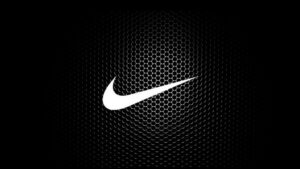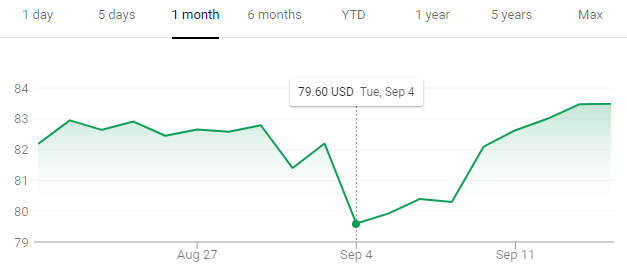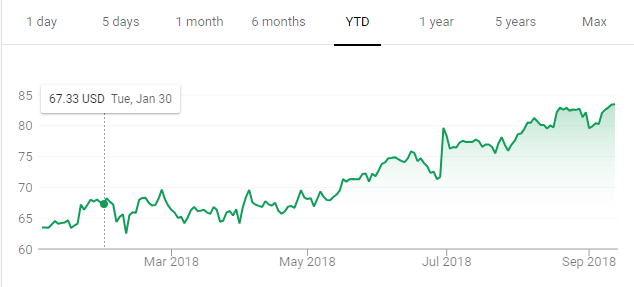- +1 512-591-8295
- vicky@vickywu.marketing
- Mon - Fri: 9:00 - 16:00
- +1 512-591-8295
- vicky@vickywu.marketing
- Mon - Fri: 9:00 - 16:00
Use code MOM50 at checkout thru Mother’s Day to get 50% off any gift card for marketing services

When I first saw Nike’s ad, knowing all the controversy I thought (like I always do with a marketer’s brain), “Why would they do that?”
Then I thought why WOULD they do that? And what can we learn from their choice? So I set out to figure it out.
There has been quite a bit of controversy about Nike’s recent advertising campaign featuring Colin Kaepernick. You’ve seen it through hashtags like #nikead and #nikeboycott and #justdoit
And this article is about why Nike’s campaign was the right campaign for them. Not about whether it was right for me, or you, or Joe’s business down the street; but about why Nike’s ad was right for Nike.
If you’ve been online, watched the news, or pretty much existed, you likely know the story. In case you do not …
Kaepernick was the quarterback for the 49ers, who kneeled during the National Anthem as, he said, a protest against the treatment of blacks, especially in light of the number of African Americans who had been killed by police.
Because of the controversy, I feel a need to warn: this post is not about what Kaepernick did, or if you think what he did is right or wrong – it’s about marketing in general and Nike’s campaign specifically. So please be respectful of everyone if you comment, and keep your comments focused on marketing and Nike’s campaign. Commentors who attack others will be removed.
As a quarterback, Nike had penned a deal with Kaepernick back in 2011. After he was released from the 49ers, he still had the contract with Nike, but likely neither knew what to do with it (nor was that time of turmoil likely the best environment during which to kick off any campaign).
Now two years after Kaepernick’s release by the 49ers (and no subsequent contract with any other NFL team), Nike released their latest Just Do It campaign. It has been met with a lot of controversy – most people either LOVE it or HATE it, with only a few with more moderate feelings.
We’re not here to discussing loving or hating the ad, or whether anyone agrees or disagrees with the message, or with Colin Kaepernick or even Nike. We’re going to focus on how and Nike got it right from a marketing and business standpoint.
The controversy mainly stems around Kaepernick kneeling during the National Anthem, which the most vocal opponents are saying is “disrespectful of the American flag” or disrespectful of the military or of America in general. President Trump has even been very vocal about this, on Twitter and in speeches.
When you look at Nike’s customer base, just over 60% of their customers are NOT in the United States, and non-US sales are experiencing faster growth. Only two of their 12 key markets are even in the US. This means, to simplify the numbers, for the most part 60% of the customers do not care about this controversy (neither positive nor negative reactions to using Kaepernick) because it has nothing to do with them. Yes, I know some might, but think for a moment – as a US citizen, would you care about an athlete in another country kneeling or not kneeling during their national anthem? Likely not, because it’s less relevant to you.
While some (not all) Americans said in polls that they do not support athletes kneeling during the national anthem, not all of those would necessarily be offended by the ad. And not everyone did not support these protests. Nike knows that demographics play into this viewpoint as well. According to CNN:
Those who say it’s wrong
Those who say it’s right
Nike also understands that 66% of people say it’s important for brands to take public stands on social and political issues (SproutSocial), and those numbers are even larger among millennials (the age range in Nike’s target demographics).
I guarantee Nike considered these numbers before moving ahead with the campaign.
Nike’s primary customer base: women, young athletes, and runners.
If you look at demographics in the US:
Keep in mind, the majority of younger Americans didn’t have an issue with kneeling during the national anthem (according to the poll referenced above), so understanding this age demographic is important to Nike.
Experts expected Trump supporters to dislike this campaign, especially considering that Trump was vocal against Kaepernick, or anyone in the NFL, kneeling. This is not the only group who would be against the campaign, but this group does have readily available demographics. Knowing that Trump supporters would likely not support Nike’s campaign, we can look at their demographics for a quick understanding of some of those likely not to support Nike’s ad:
As you can see, even in the US, Nike’s largest target customer base are, for the most part, not those who supported Trump and may not feel the same negative reactions that Trump has expressed towards Colin Kaepernick, or therefore this ad or Nike.
Of the not quite 40% of the customers in the United States, Nike likely also realized not all of those customers would have negative reactions to the campaign. Some would actually have positive reactions, and some relatively neutral. Nike likely knows those exact percentages and I do not, but if you were to assume that each group of reactions would have equally split customers (not likely but easy for the math), that gives us 33% each group.
Looking at 100% of Nike’s customer base, this could theoretically break down to:
This would mean, out of Nike’s global sales, they were likely betting on 86.8% of customers to either have neutral or positive reactions to the ad campaign. And only 13.2% would have negative reactions.
These are just a possibility and simplified for our purposes here – believe me Nike probably has very specific figures that would help them determine fairly accurately what percentage of their customer base could have negative reactions to the ad.
Nike also likely looked at the potential to gain new customers from groups that directly support Colin Kaepernick’s message, or the motivational overall message of the ad (in the video above).
I’m sure Nike realized there could be calls to boycott Nike. I’m sure they also realized that research shows this type of retail activism rarely sticks. This would mean any short-term negative impact would likely be just that – short term.
While Nike experienced a quick dip in their stock price when the ad first appeared. Since that time, online sales surged, and Nike stock has bounced back to closing at the highest it has ever been.
Nike stock at the time of the ad release – per Google

The company also gained 170,000 new Instagram followers in one week, and most followers on Instagram has a positive reaction to the ad campaign.
Nike understands its customers.
Nike doesn’t try to market to those that are not its customers.
They focus on their ideal customer in their niche.
Let’s not forget the old adage “All publicity is good publicity.” When people are talking about a brand – good or bad – it does seem to result in added sales, because the added exposure triggers reminders for those people who still support the brand.
And, for Nike, it seems to be working.
What does this case study tell you about the importance of understanding your own customers?
What are your thoughts as to whether this was an effective ad strategy for Nike given Nike’s customer base?
By Vicky Wu
Get solid marketing strategies, designed for entrepreneurs on the track to 7-figures and beyond, right in your inbox.

This website uses cookies to ensure you get the best experience on our website. By continuing to use the website, you agree to our use of cookies. We do not share or sell your information. More info